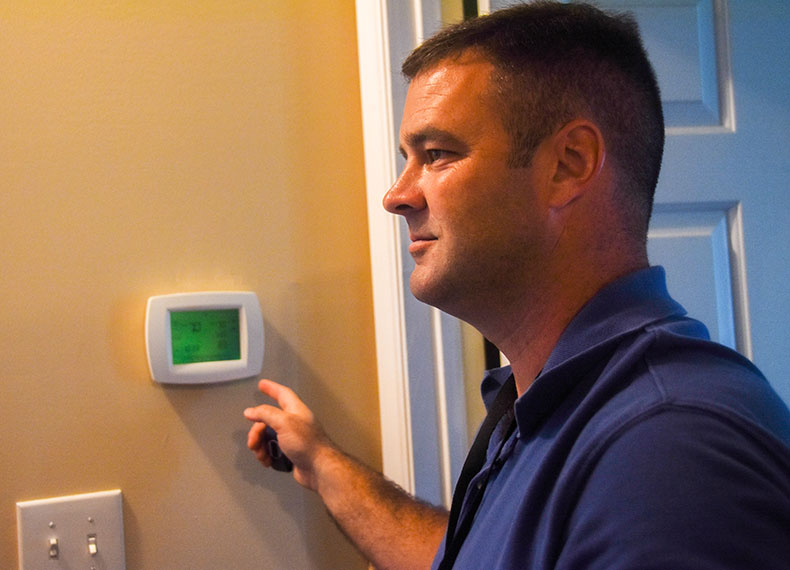Hi, I’m Jake Thomas, manager of marketing and energy services for Union Power Cooperative. You might have seen me out in the community or in your home showing you ways to save money on your energy costs. For the next three months, I’ll be visiting your home through our monthly cooperative newsletter.
While a professional home energy audit is the best way to determine where your home is losing energy and where you can save, I’d like to show you some ways you can conduct your own simple, but diligent, walk-through and spot many problems in any type of house. While a “do-it-yourself” home energy audit will not be as thorough as a professional home assessment, it can help you pinpoint some of the easier areas to address.
When walking through your home, keep a checklist of areas you have inspected and problems you found. This list will help you prioritize your energy efficiency upgrades. Do not assume that just because your home is recently constructed — or even new — that there are no opportunities to save energy. Energy-saving technology has evolved rapidly over the past few years, outpacing training commonly available to many builders, including some of the most reputable.
This month, we are focused on air leaks. As the cold weather is just around the corner, by following the simple recommendations below, you can keep the cold air out and remain warm and toasty inside.
Identify Air Leaks
A home’s biggest air leaks are usually located in big areas, such as the attic. But small leaks also add up. To find air leaks, look for daylight around window frames and doors. If you see light, there is a leak. Check for gaps along baseboards, edges of flooring and junctures of walls and ceilings. While plumbing fixtures, switches and electrical outlets account for smaller leaks, they can add up. Also check for leaks outside your home, especially in areas where two different building materials meet.
Repair Air Leaks
There are many things you can do yourself, without calling in an expert. Plugging and caulking holes or penetrations in faucets, pipes and electric outlets will result in an immediate improvement. If you find cracks and holes in mortar, foundation or siding, seal them with the appropriate material.
The potential energy savings from finding and repairing these drafts in a home may range from 10% to 20% per year, and the home is generally much more comfortable afterward.
Consider Ventilation
When sealing any home, you must always be aware of the danger of indoor air pollution and combustion appliance “backdrafts.” Backdrafting occurs when the various combustion appliances and exhaust fans in the home compete for air. An exhaust fan may pull the combustion gases back into the living space. This can obviously create a very dangerous and unhealthy situation in the home.
In homes where a fuel is burned (i.e., natural gas, fuel oil, propane, or wood) for heating, be certain the appliance has an adequate air supply. Generally, one square inch of vent opening is required for each 1,000 Btu of appliance input heat. Burn marks or soot around the appliance burner or at the vent collar, or visible smoke anywhere in the utility room while the appliance is operating, indicate poor draft. When in doubt, contact one of our energy specialists to assist.
If you are uncertain of your audit’s findings or need additional assistance, contact me at 704-289-3145 to schedule an in-home energy audit. And in the meantime, be sure to visit our Energy Center at union-power.com to obtain additional energy savings tips and tools.
Get energy savings tips and tools on union-power.com

